Is the Family Forest Carbon Program Right For You? Part 3: You’re Concerned About Greenwashing and Corporate Polluting
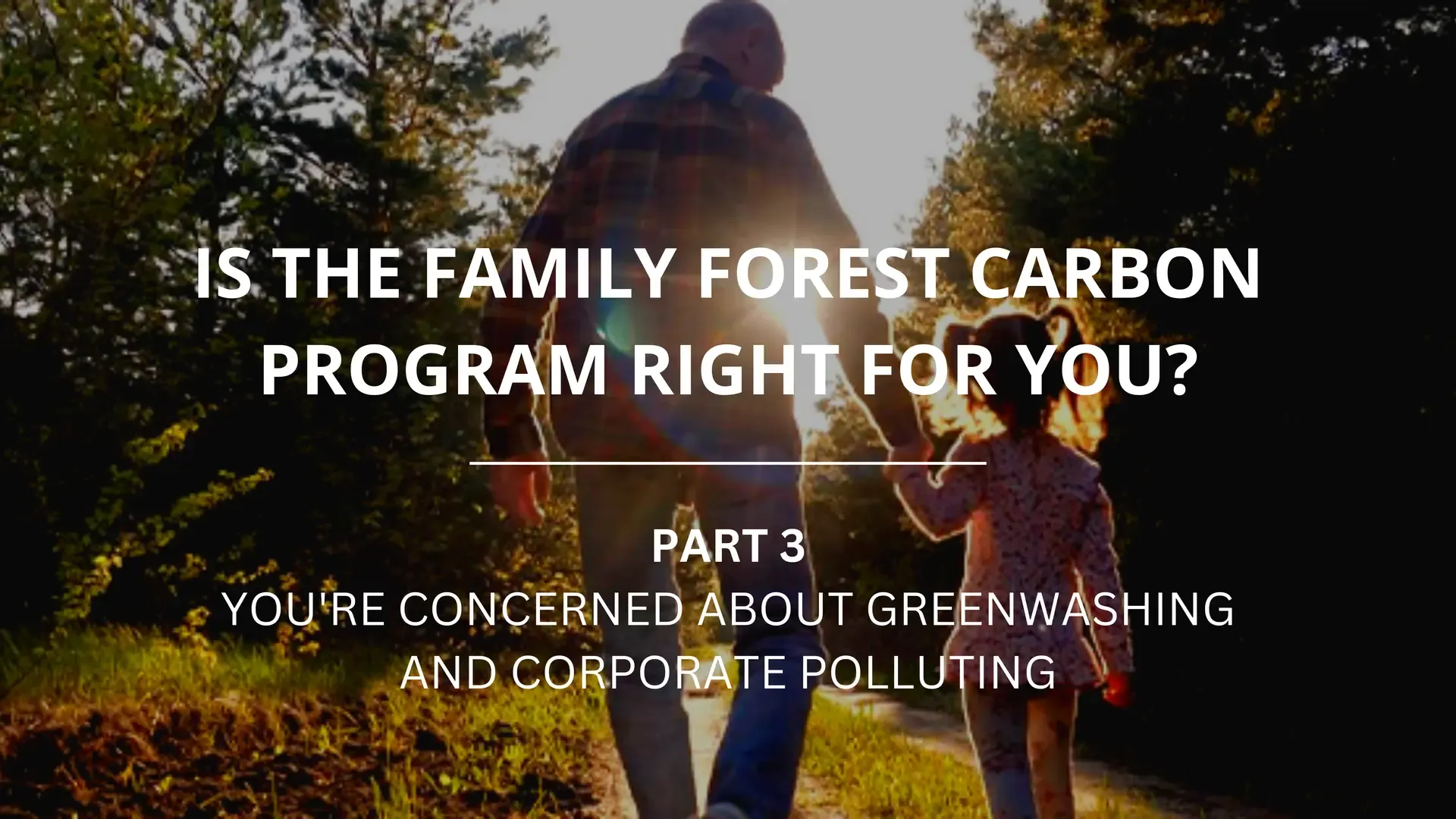
This blog post is part of a five-part series called, “Is the Family Forest Carbon Program Right for You?” Here are the key takeaways you will find in this post:
A definition of greenwashing and what we are doing to mitigate it.
Reasons why corporations are a powerful tool for fighting climate change.
Carbon markets aren’t a solution by themselves. They are an enhancer, a way to quicken progress towards a goal — but we must be committed to that progress for them to work.
Defining “greenwashing”
Simply put, greenwashing is the act of marketing something as being more environmentally friendly than it is. Even if the term itself is new to you, the idea has likely already crossed your mind while considering this or other carbon programs. If that’s the case, we are so glad that you are concerned about the integrity of carbon credits that might someday be created by your land. We share the same feelings and are committed to producing credits that meet the highest standards of integrity.
There are a few aspects of avoiding greenwashing that we want to address. On the one hand, there is the science behind calculating carbon credits produced by our program. We could spend a lot of time talking about the concept of additionality. Or we could point you to this blog post about additionality and why it’s so important.

Likewise, we could offer an in-depth explanation of our carbon accounting methodology, including how it is unique, rigorously tested, and verified by the world leader in carbon accounting…. or we could recommend this blog post about our methodology and what it means.
But before we move on from the topic of greenwashing, we want you to feel 100% confident in the organizations you are partnering with, should you enroll in the Family Forest Carbon Program (FFCP). To do that there are a few other things to consider outside of the science-y stuff.
First is our lack of financial interest internally, beyond creating a sustainable model for the program. If you read the section on our not-for-profit status in the first blog post in this series, you’re up to speed on this.
Second, you should understand how carbon markets can be a powerful tool for addressing climate change, and how corporations are a means to an end.
Interested in learning more about the Family Forest Carbon Program? Click here you check your eligibility today.
For the entirety of human civilization, the atmosphere has included carbon dioxide. That CO2 comes from lots of places, many of them natural, but increasingly a large share of CO2 hitting us comes from man-made emissions, and in particular from the burning of fossil fuels. Those fossil fuels are super useful for human beings. We use them to drive our cars, heat our homes, grow our food, and ship our materials around the globe. So we can’t expect to stop burning those fuels overnight — it would be a catastrophe. But we need to stop — or significantly reduce our usage — as soon as possible.
And as humans we are trying. We are doing what we can. We’re installing wind and solar, we’re beginning to drive electric cars, we’re recycling. The things we are starting with are the easiest, cheapest, least disruptive things — which makes sense. When you have a very difficult task, you always start with the easiest parts.
A hypothetical scenario
Here’s a quick illustration to help put this into perspective:
Let’s say, hypothetically, that all the companies on Earth have been working on reducing their fossil fuel use, and so far, they’ve implemented all the ideas that cost less than $10 per tonne. But they’ve run into a problem: the next level of ideas, or “reductions,” is going to be really hard and very expensive: $100 per tonne. Some companies run the numbers and discover they can’t afford to do it and stay in business. So, what should they do?
Well, it turns out that forest landowners could, in theory, take more CO2 out of the atmosphere if they changed their behavior. It would cost them something, but it wouldn’t be nearly as much: $25 per tonne, let’s say.
Now, here’s the question for you: would you rather those companies spend $100 per tonne on reducing their own emissions, or would you suggest those companies to pay the forest landowners to reduce their emissions instead?
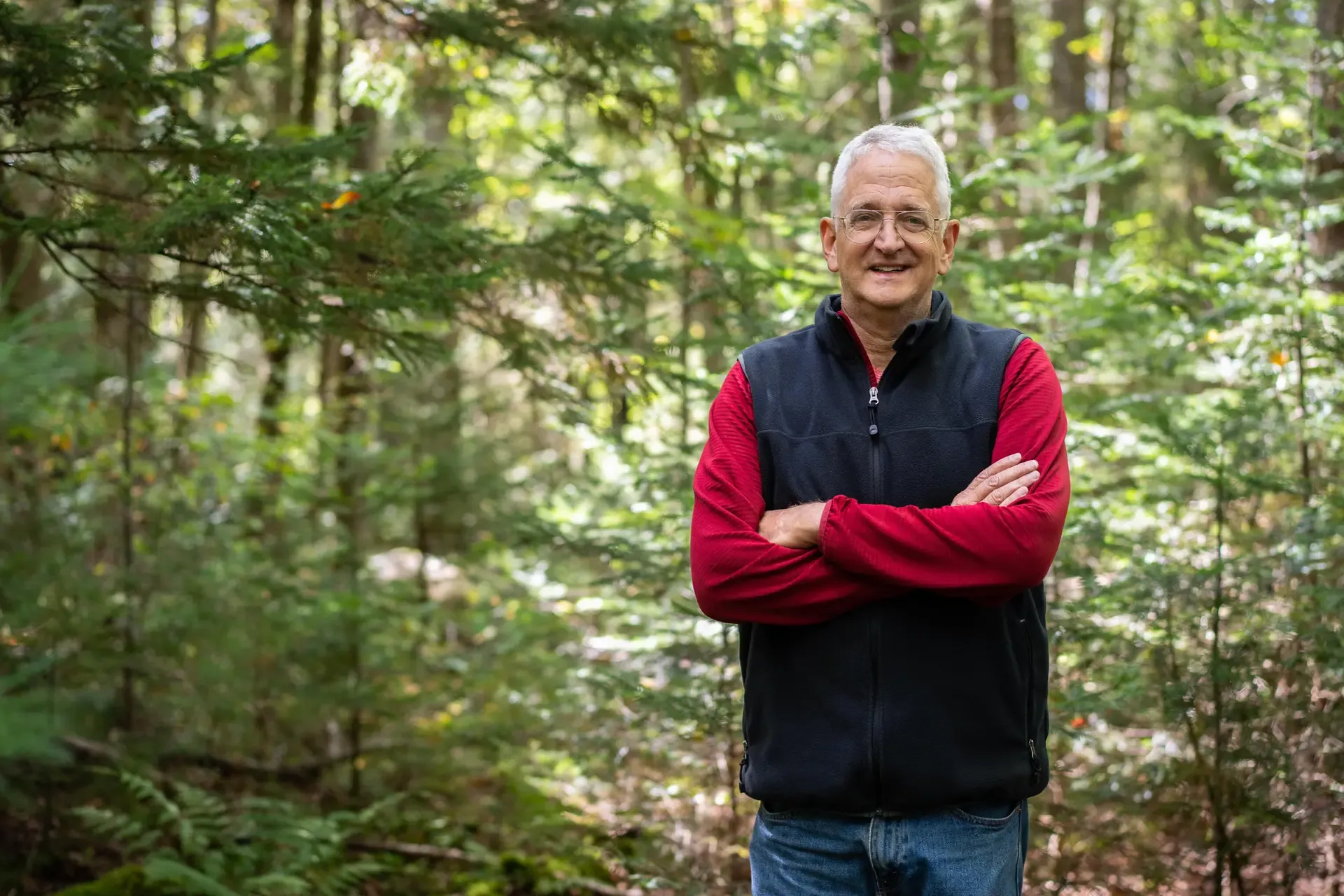
Family landowner Tim Stout stands in his woods in Vermont.
In option A, the company spends $100, and there is one less tonne of CO2 for us to worry about.
In option B, the company spends the same $100, and there are four less tonnes of CO2 in the atmosphere.
This is the potential power of carbon markets: they result in the most efficient use of resources, which allows us to achieve more impact.
The companies we work with
Now, there are important caveats we should mention: the above example only works if the companies really do invest in the necessary research and development to further reduce their emissions in the long term. In other words, carbon markets aren’t a solution by themselves. They are an enhancer, a way to quicken progress towards a goal — but we must be committed to that progress for them to work.
This is why FFCP sells its carbon credits only to companies who have made, and are acting on, credible commitments to reduce their own emissions in line with what climate science tells us is necessary.
The Family Forest Carbon Program is now enrolling landowners with 30 acres or more in Pennsylvania, West Virginia and Vermont, as well as select counties in Maryland, Massachusetts, Michigan, Minnesota, New York and Wisconsin. Click here to check your eligibility today.
More from this series...
To continue learning about our program and whether it fits your needs, jump to another post in this series:
Related Articles
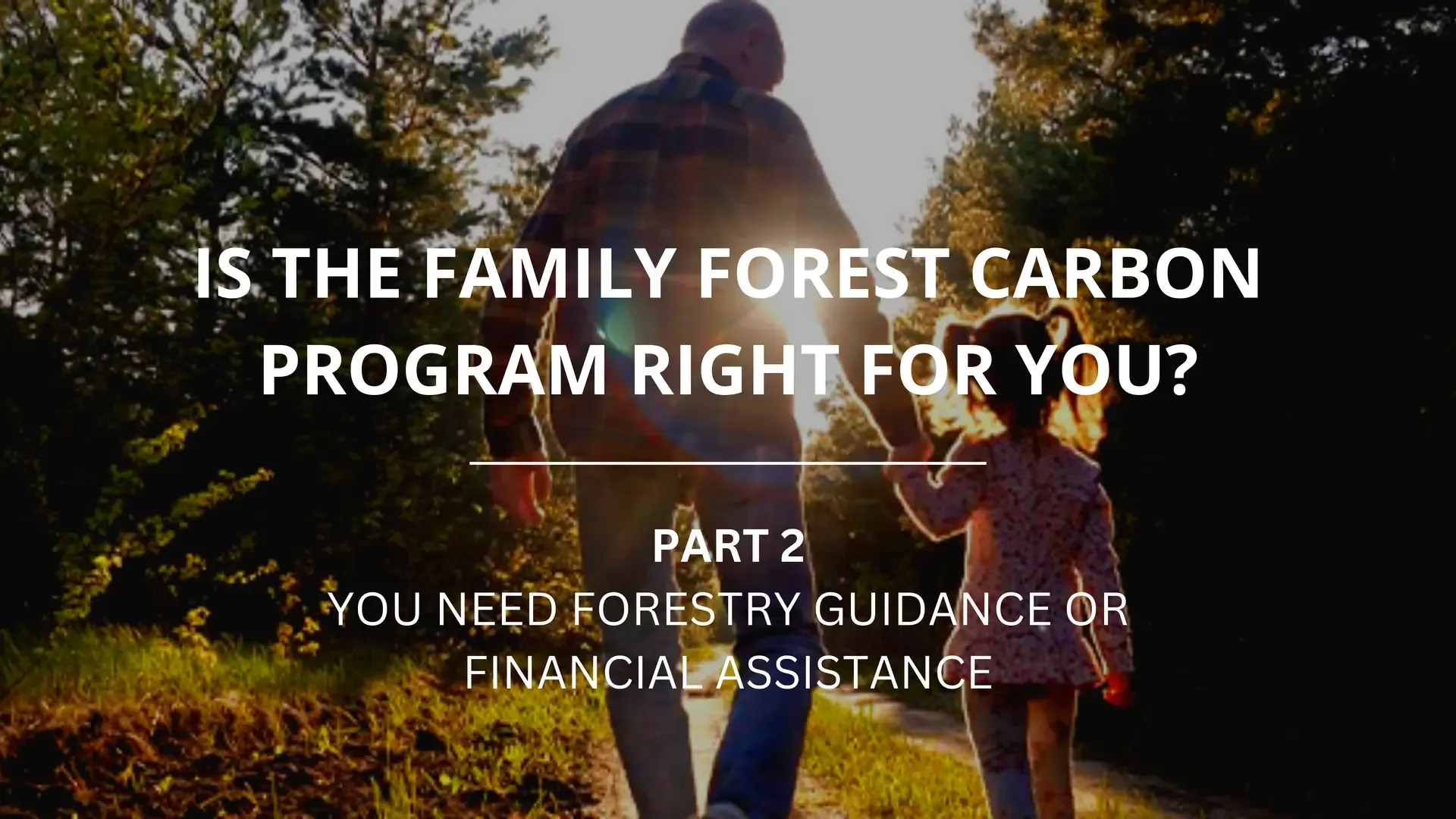
March 28, 2023
Is the Family Forest Carbon Program Right For You? Part 2: You Need Forestry Guidance or Financial Assistance
One of the most common things we hear from landowners is that they want to do right by their land, and just need a bit of guidance to ensure they are making the right choices. In this post we look at the ways the Family Forest Carbon Program (FFCP) provides you with technical assistance and management flexibility to reach your unique goals for your land.
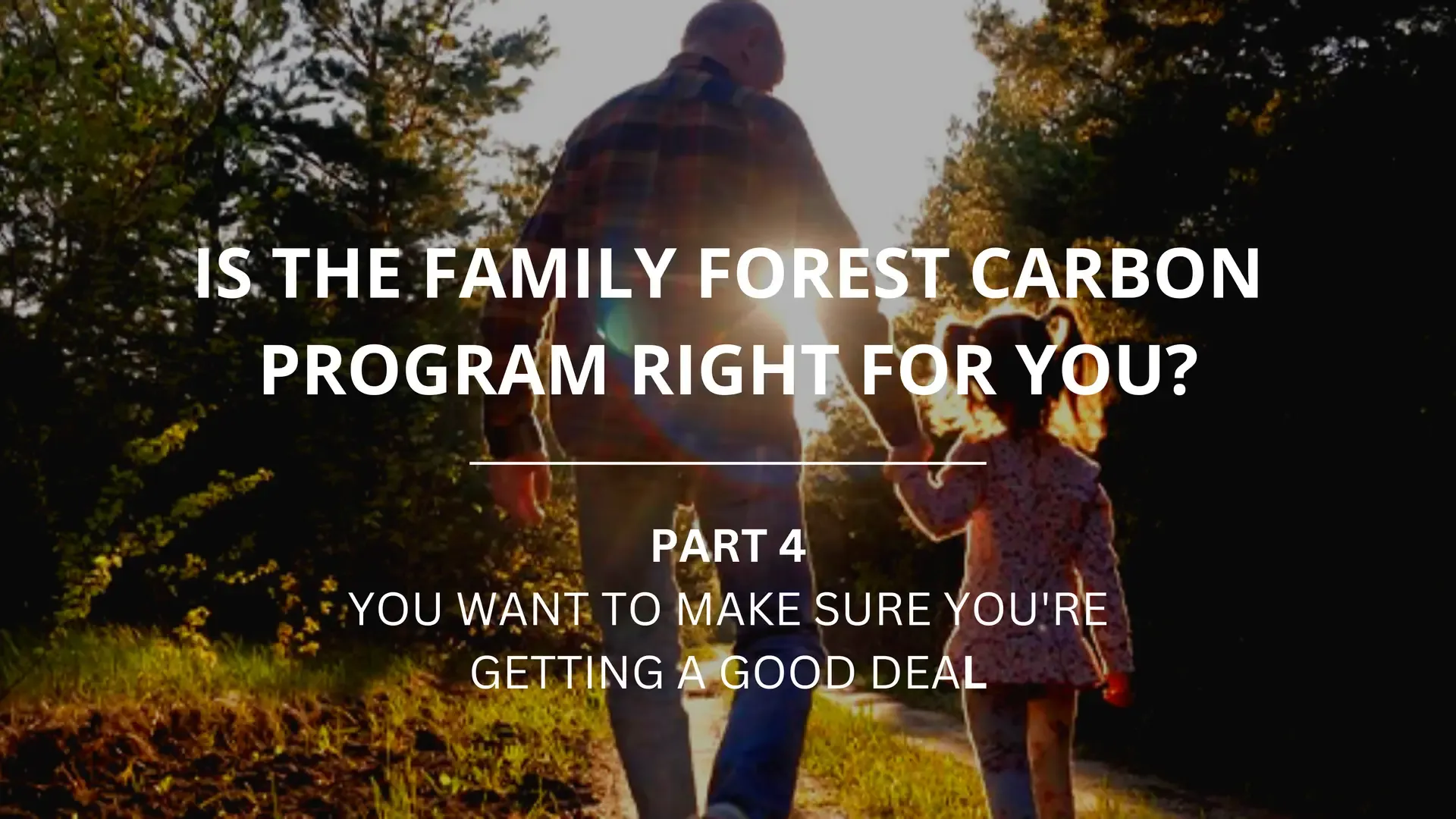
March 29, 2023
Is the Family Forest Carbon Program Right For You? Part 4: You Want to Make Sure You're Getting a Good Deal
First, we want to acknowledge that financial considerations are probably not the number one motivating factor for you when you think about your goals for your forest. However, they are also not unimportant. If you’re like most landowners, you want to know that whatever you implement is going to be financially possible for you and your family, and you want to know that you’re not making an outright poor financial decision.
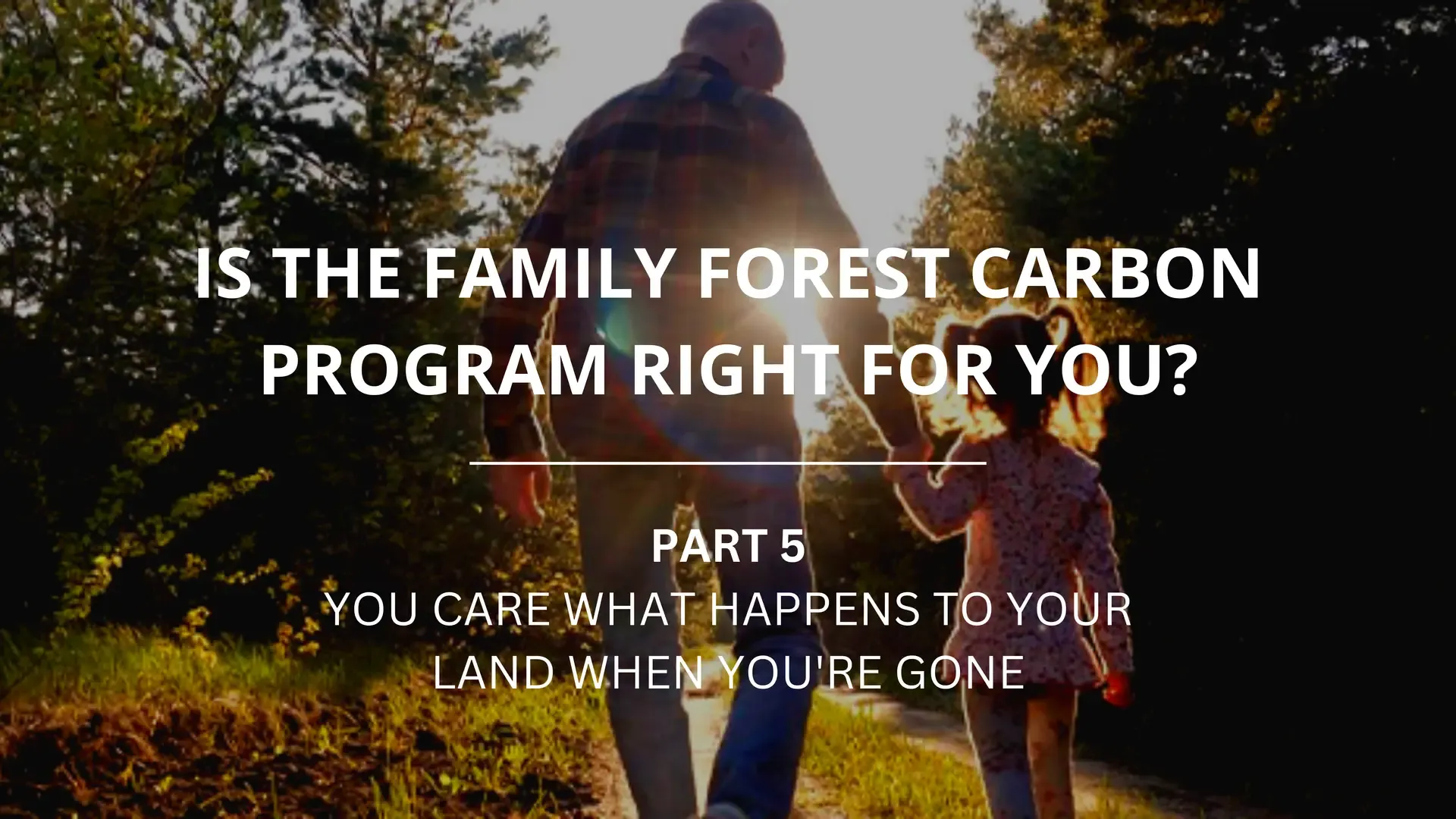
March 29, 2023
Is the Family Forest Carbon Program Right For You? Part 5: You Care What Happens to Your Land When You're Gone
What happens to my contract if I sell the property? What if the property passes on to my heirs in the event of my death? These are very valid questions. Data on land tenure indicates that most properties that enroll in The Family Forest Carbon Program will be owned by someone else by the end of the 20-year enrollment period, so we have intentionally designed the program to benefit the current owner, as well as the next. In this post we look at how the program can support future owners of your land.